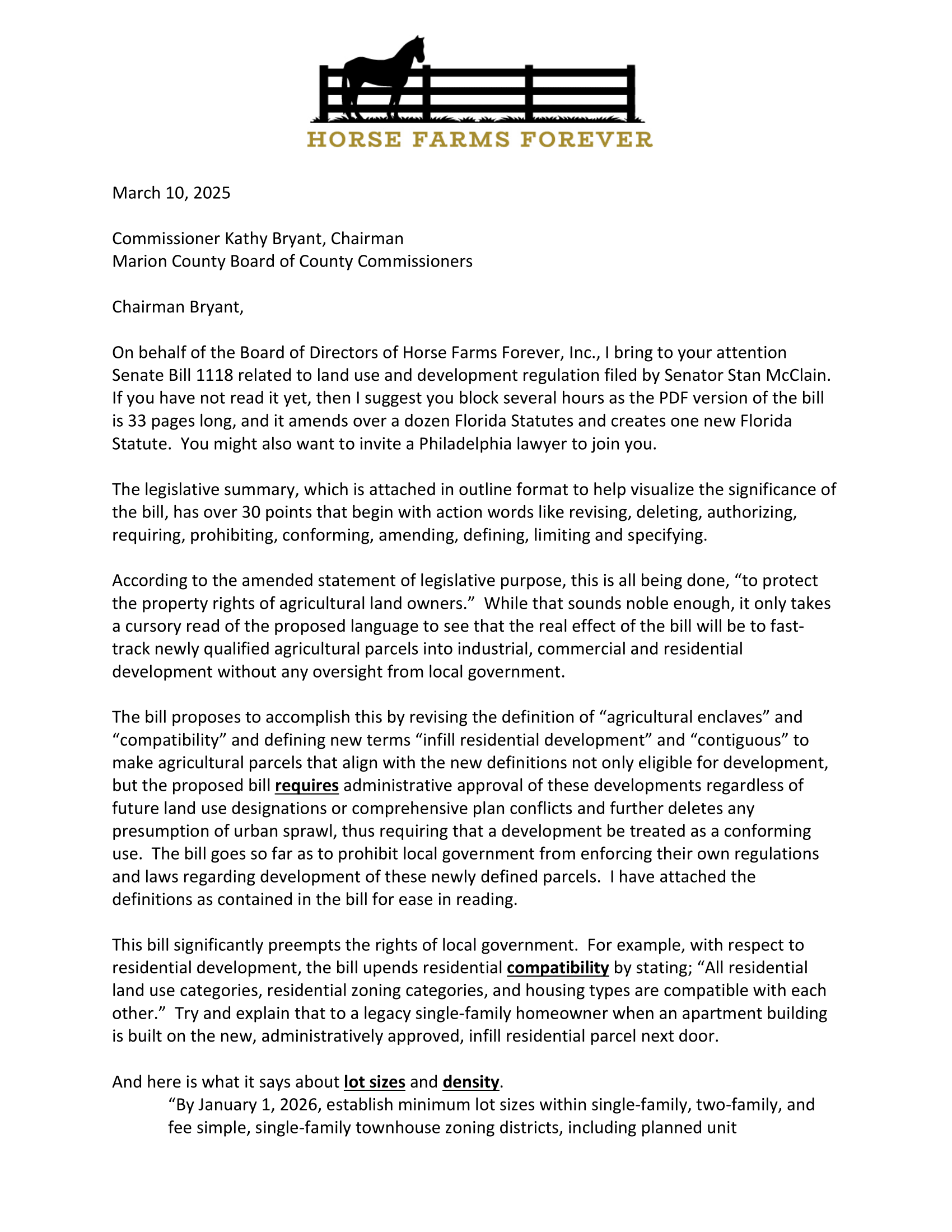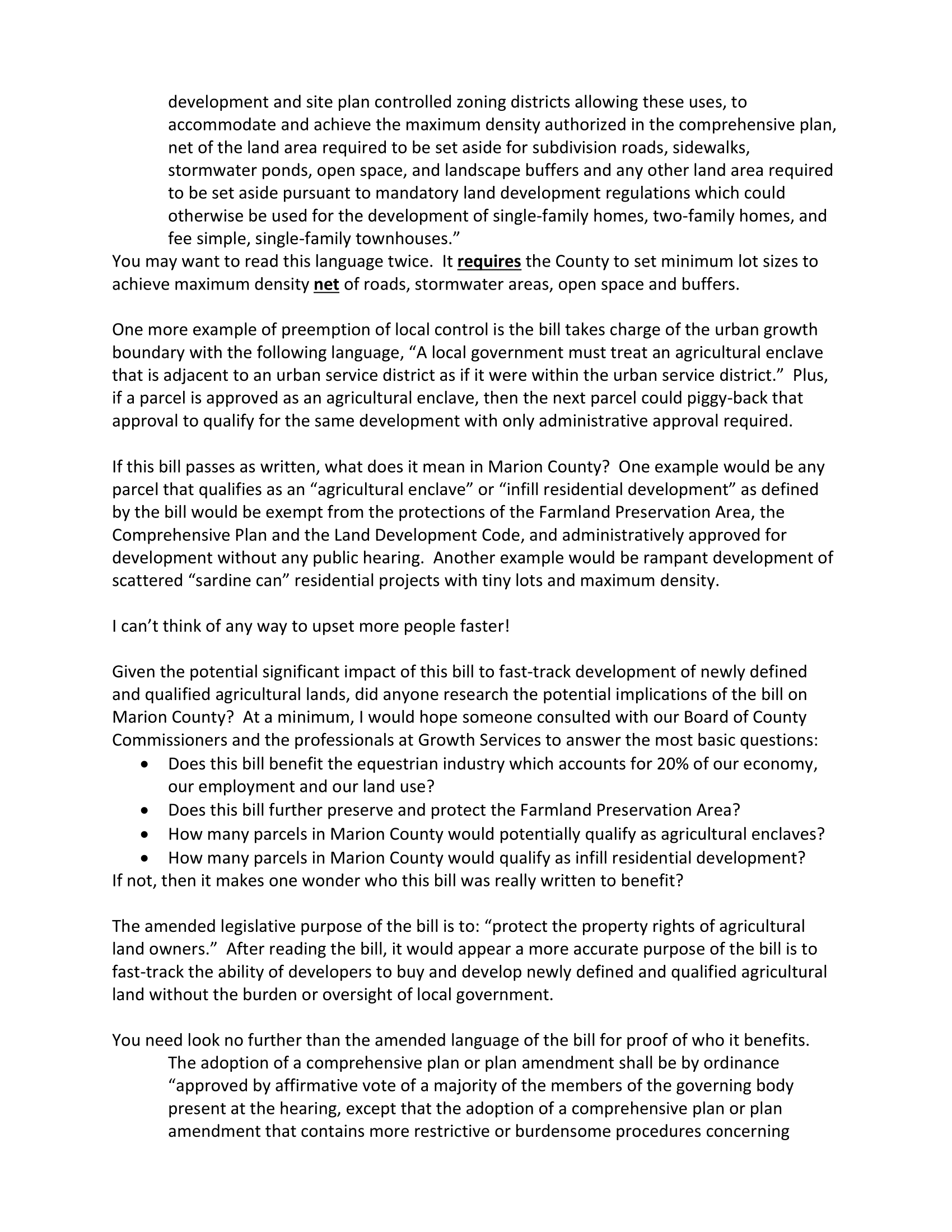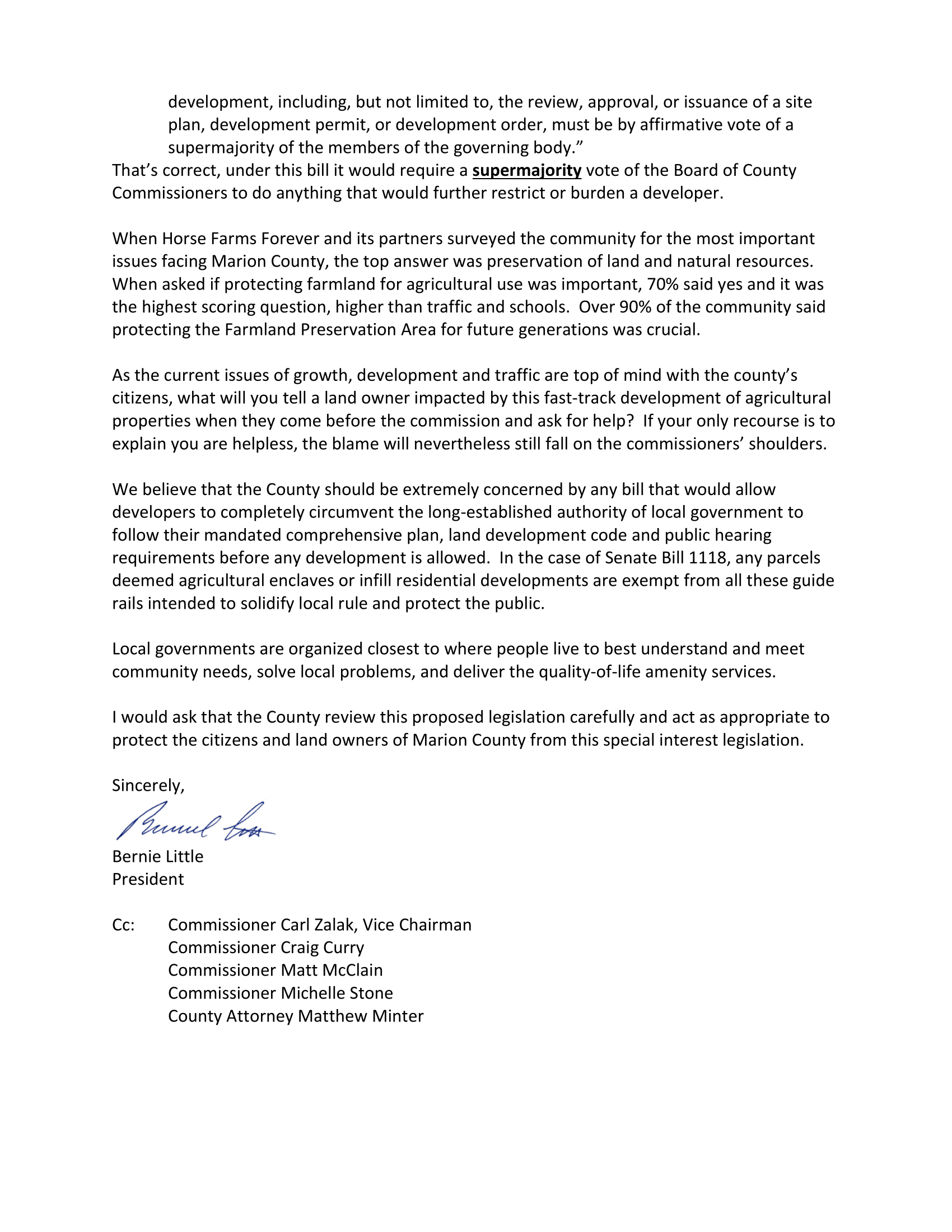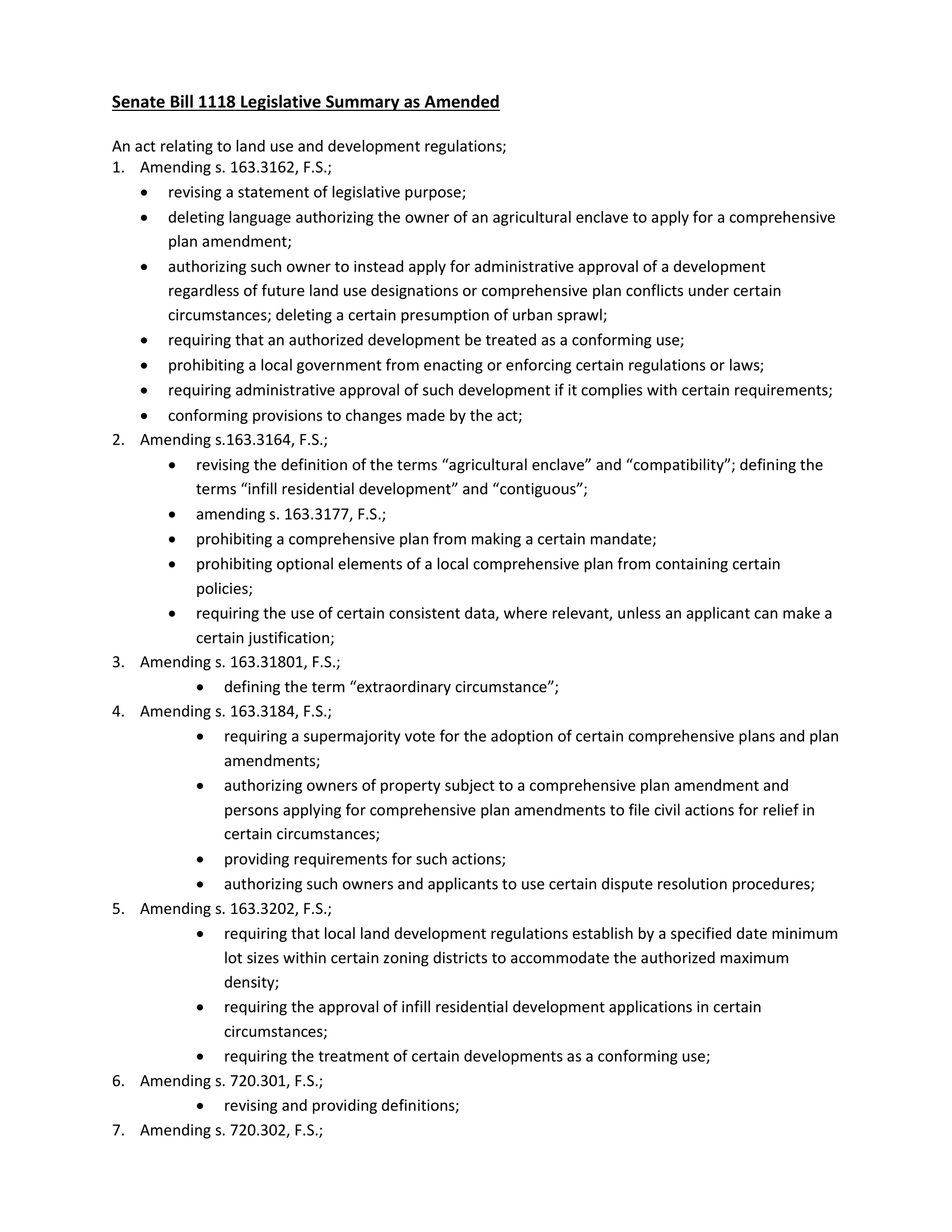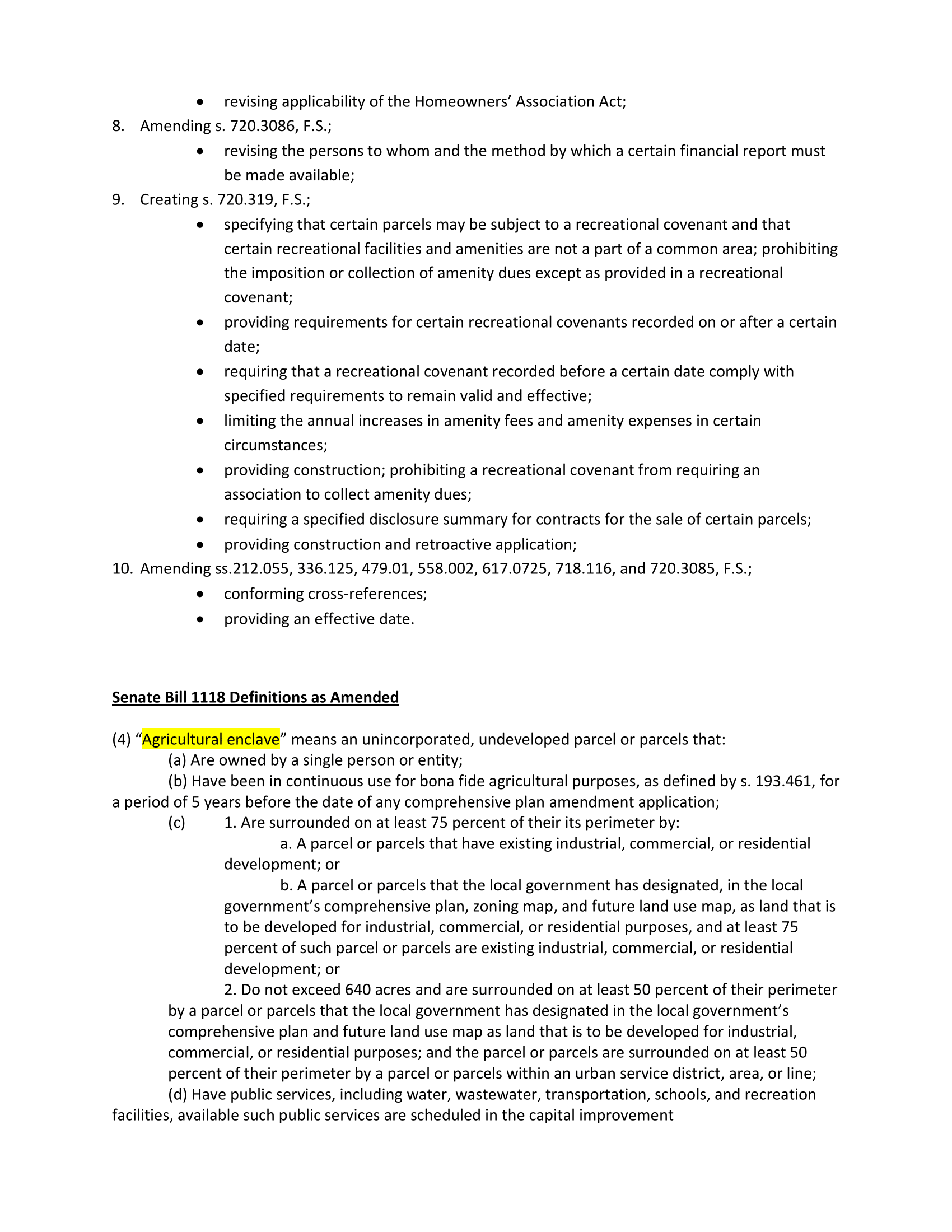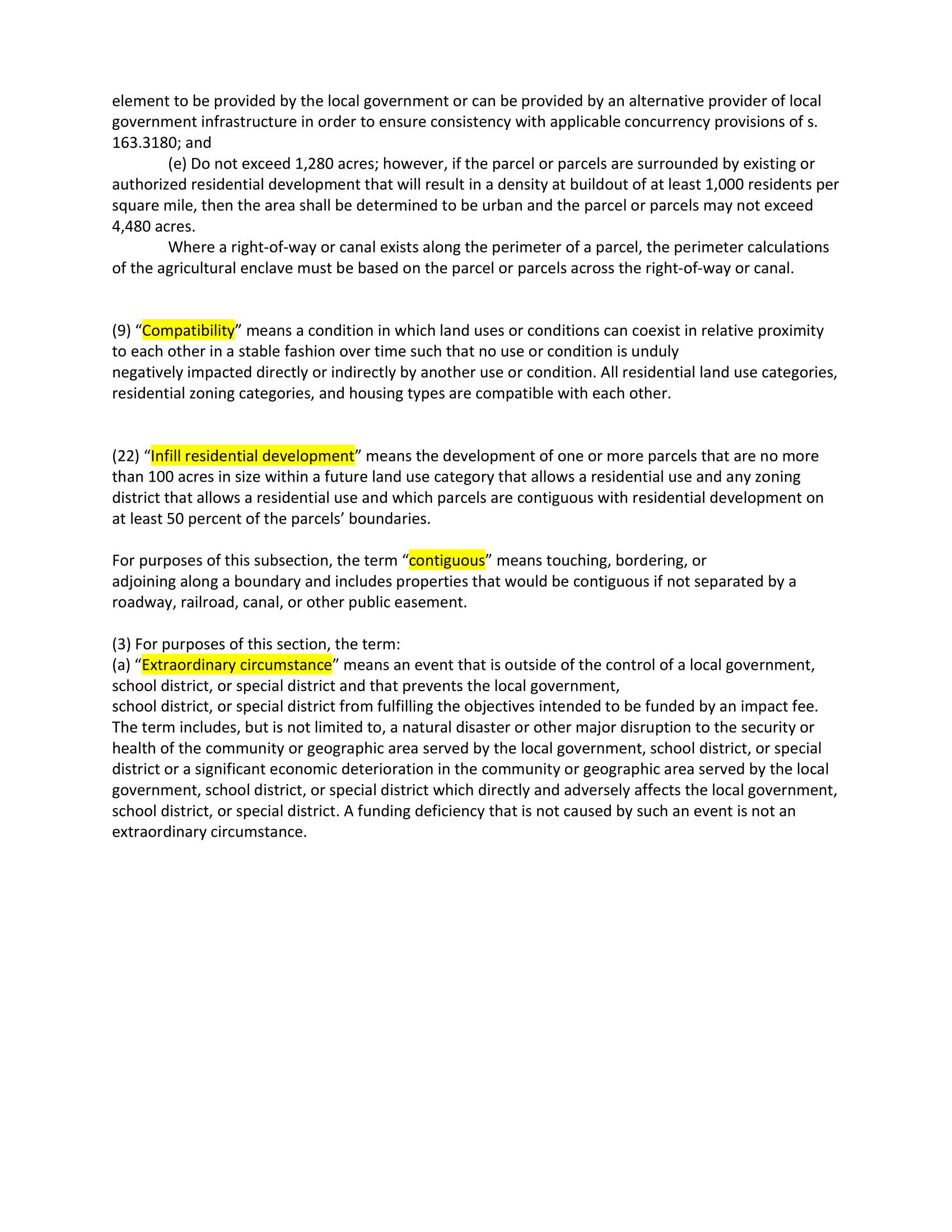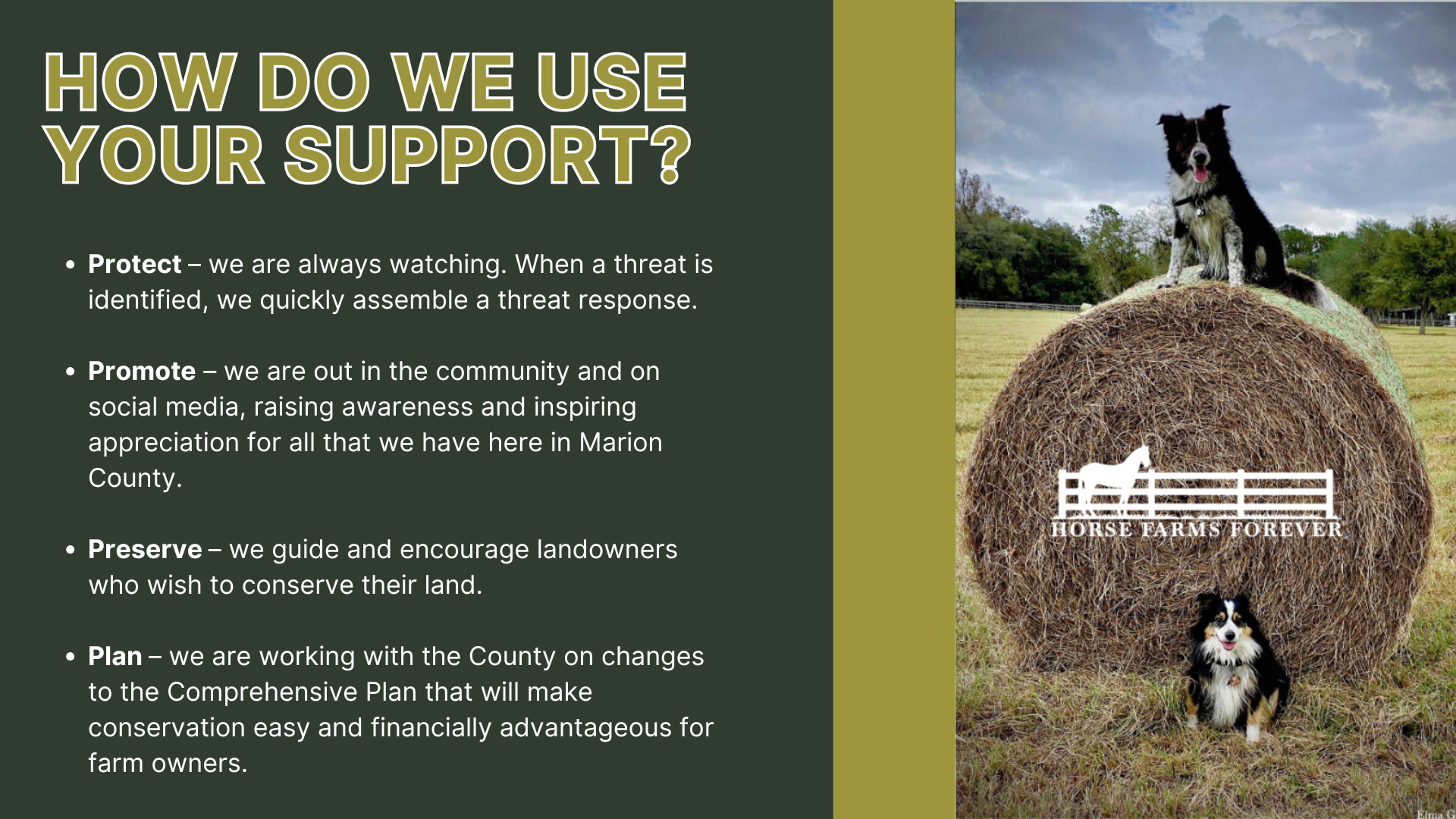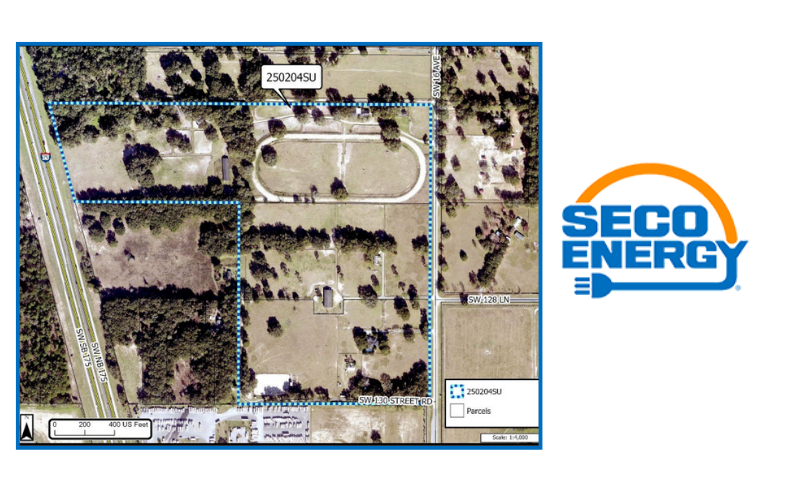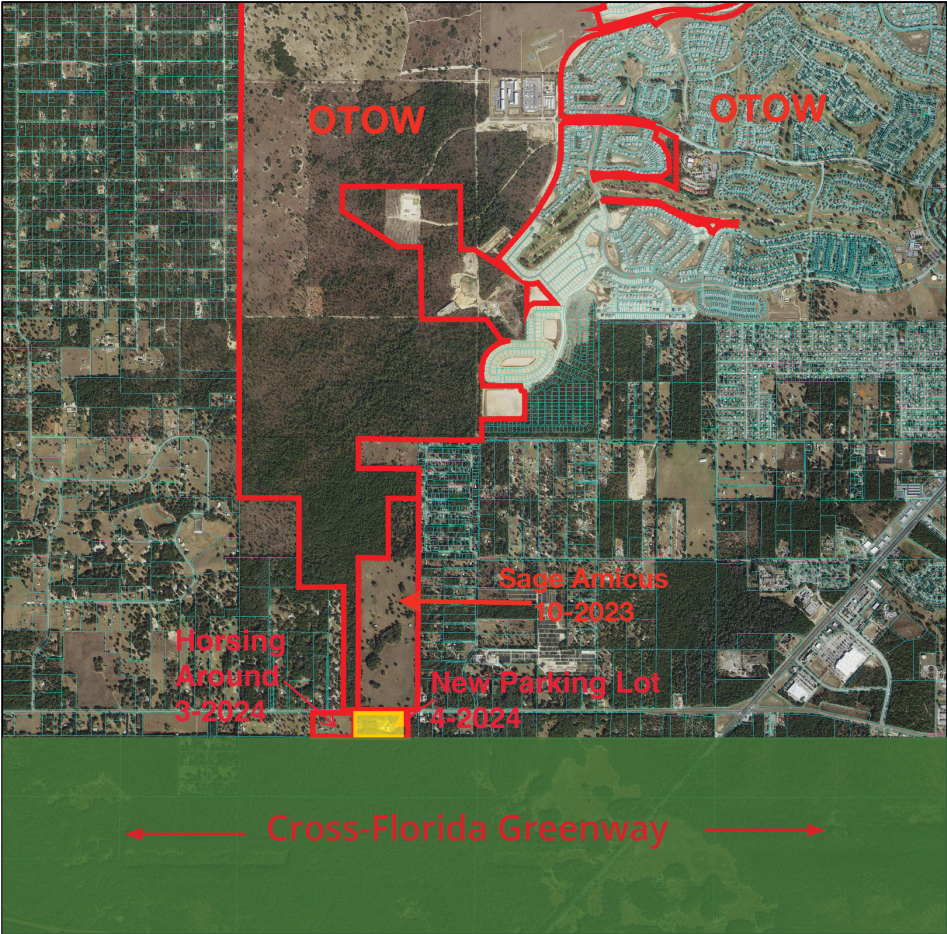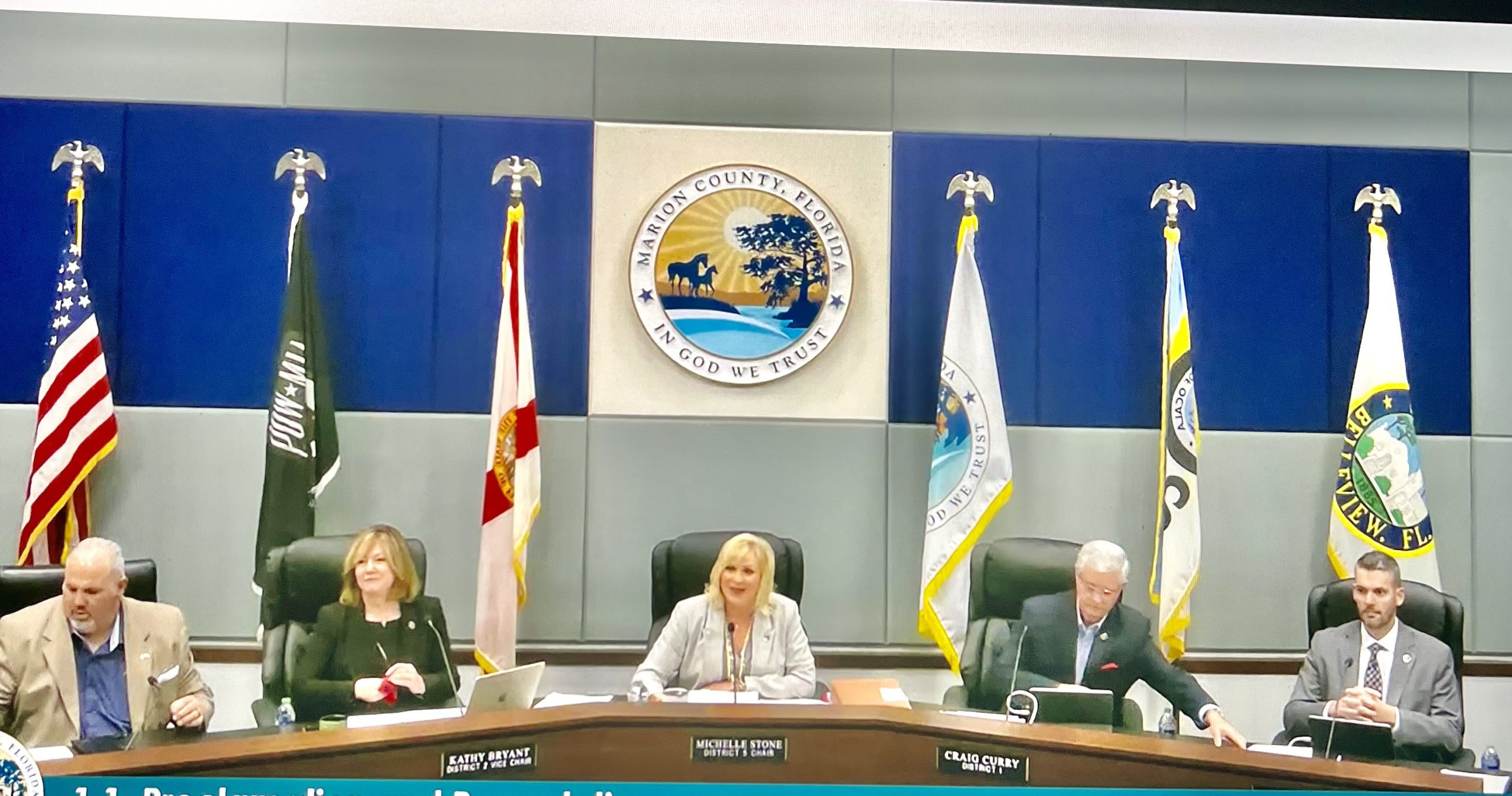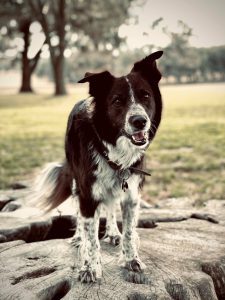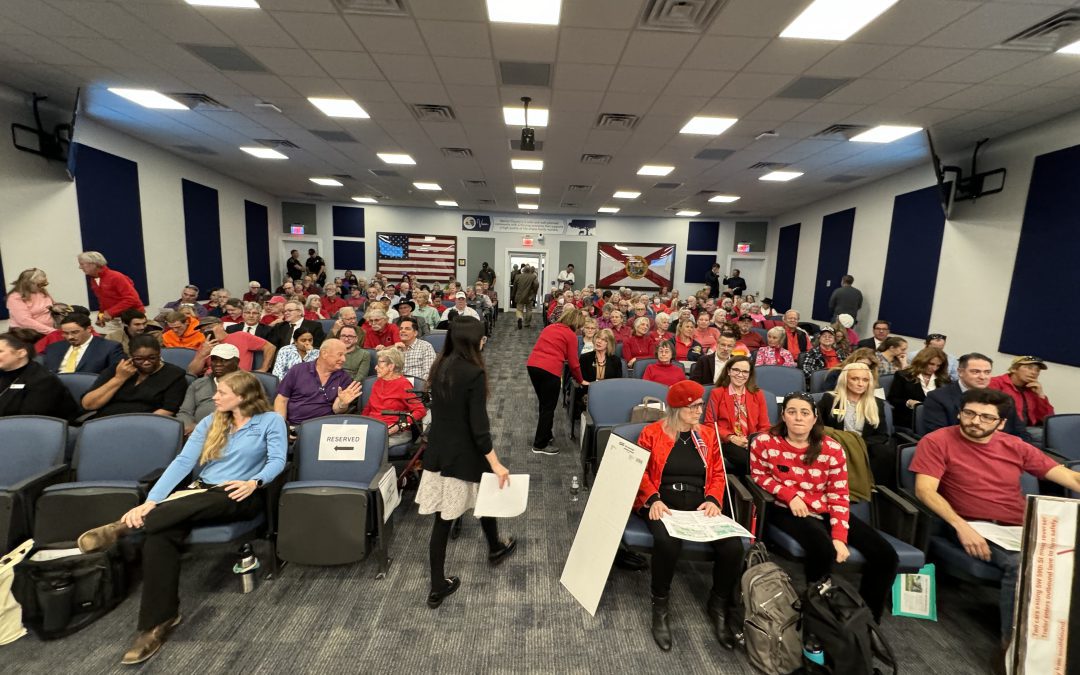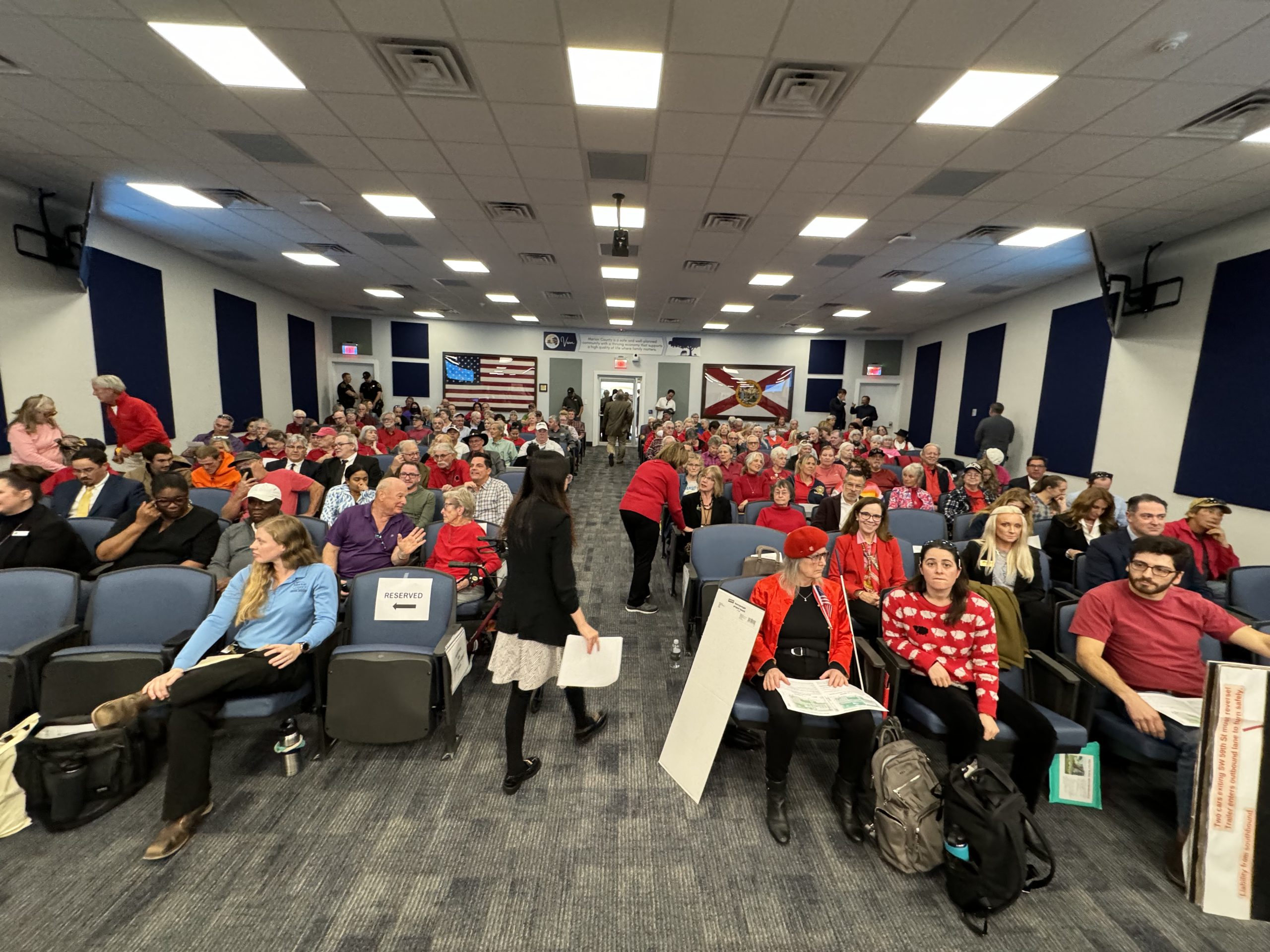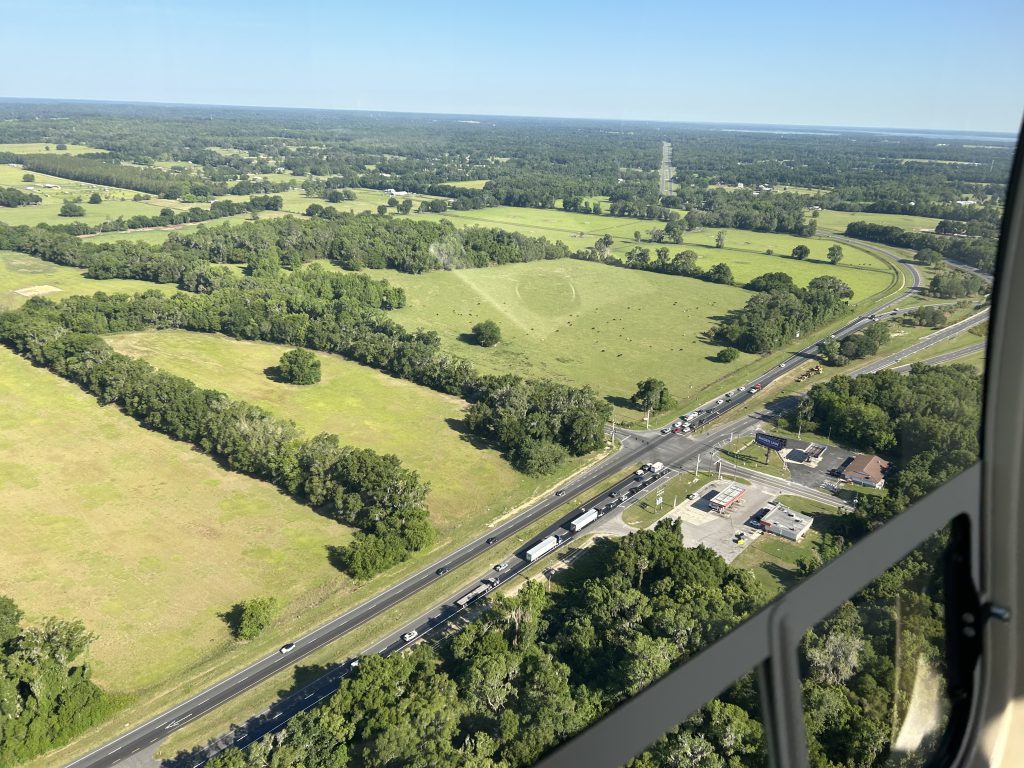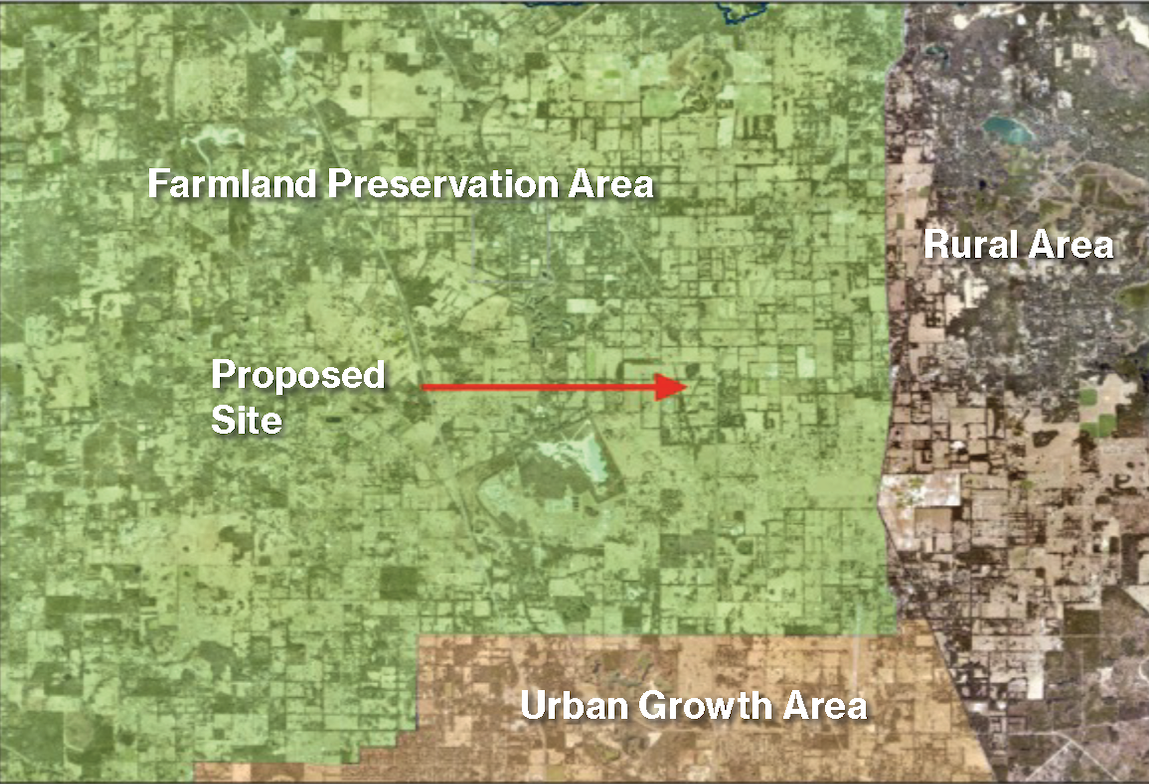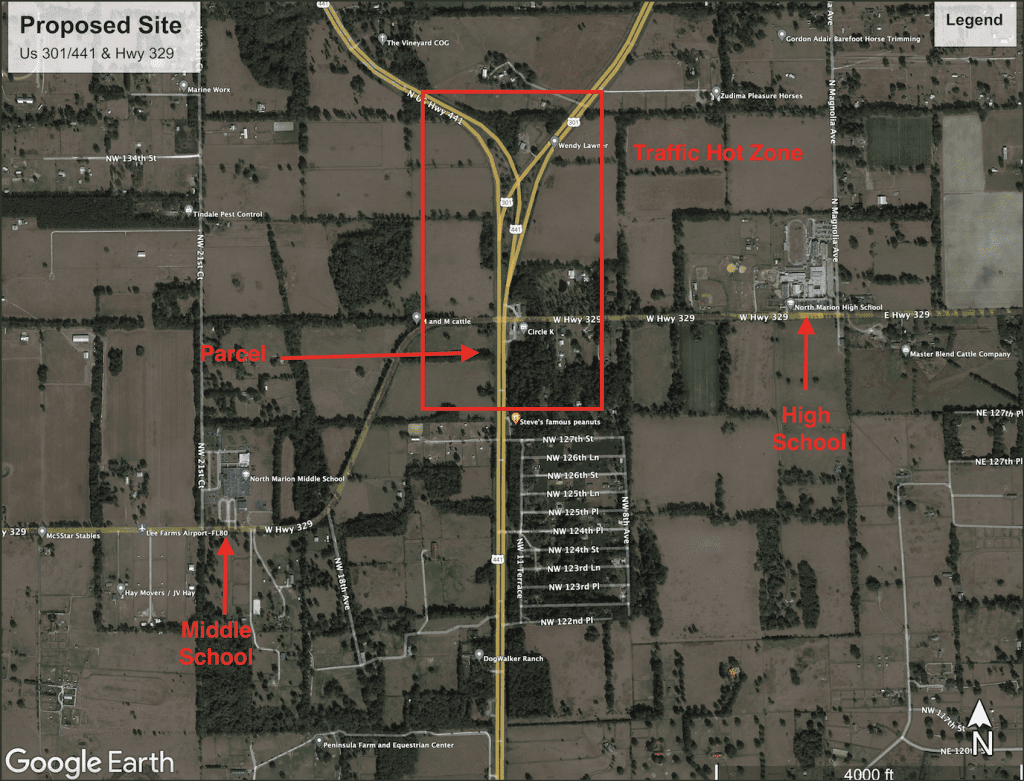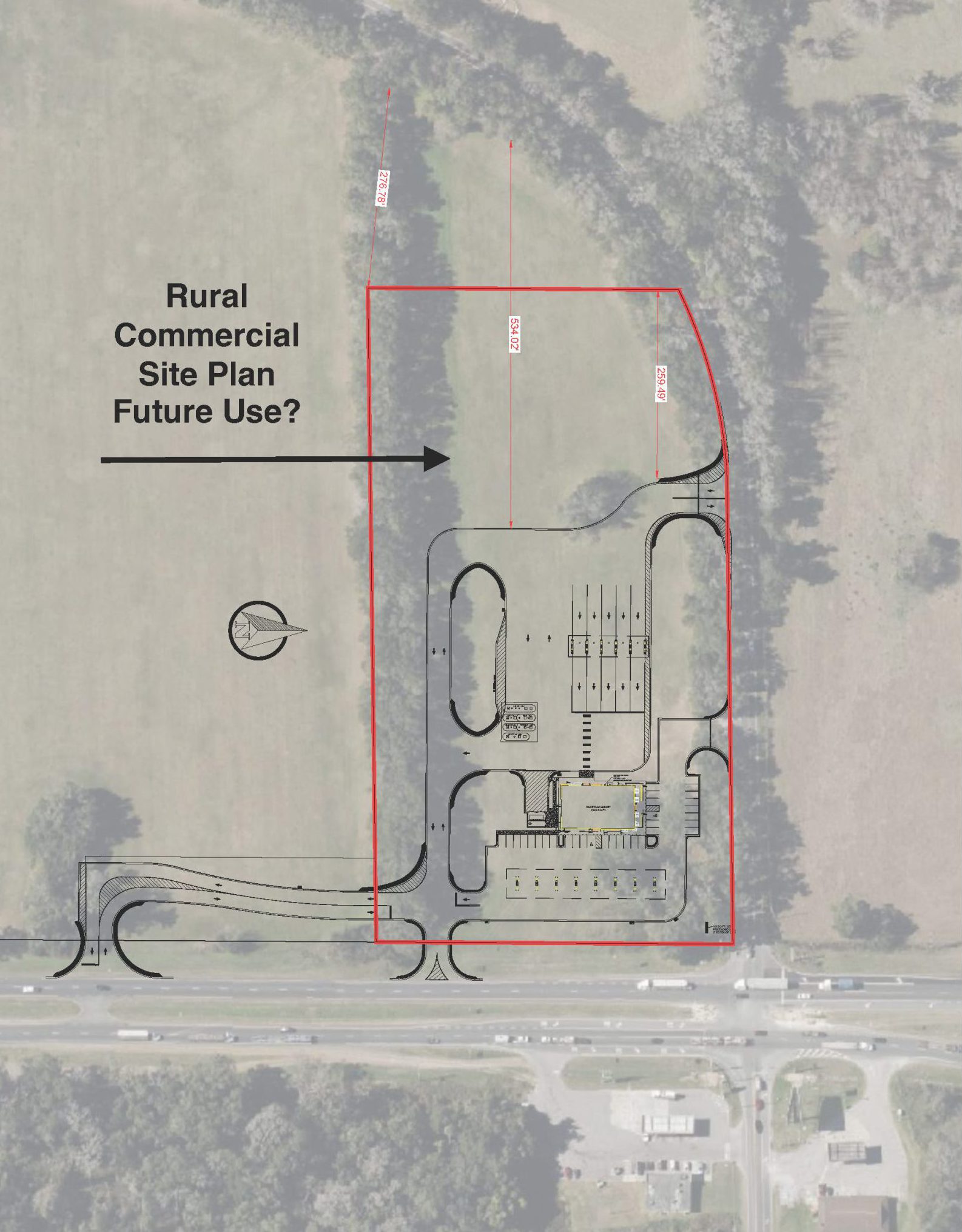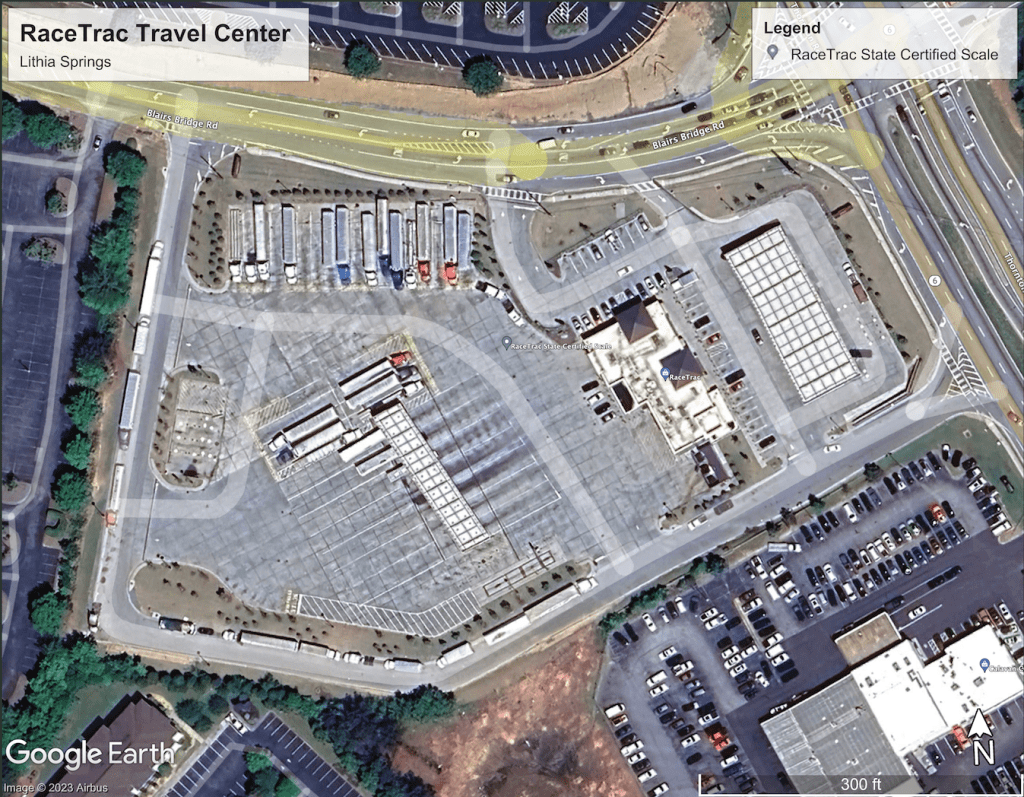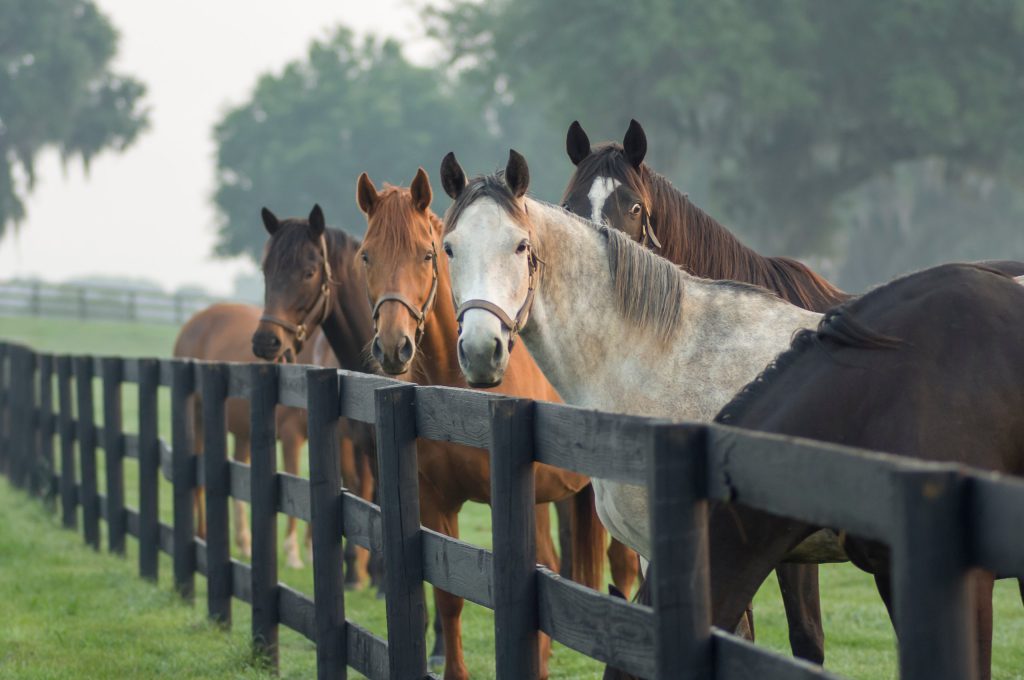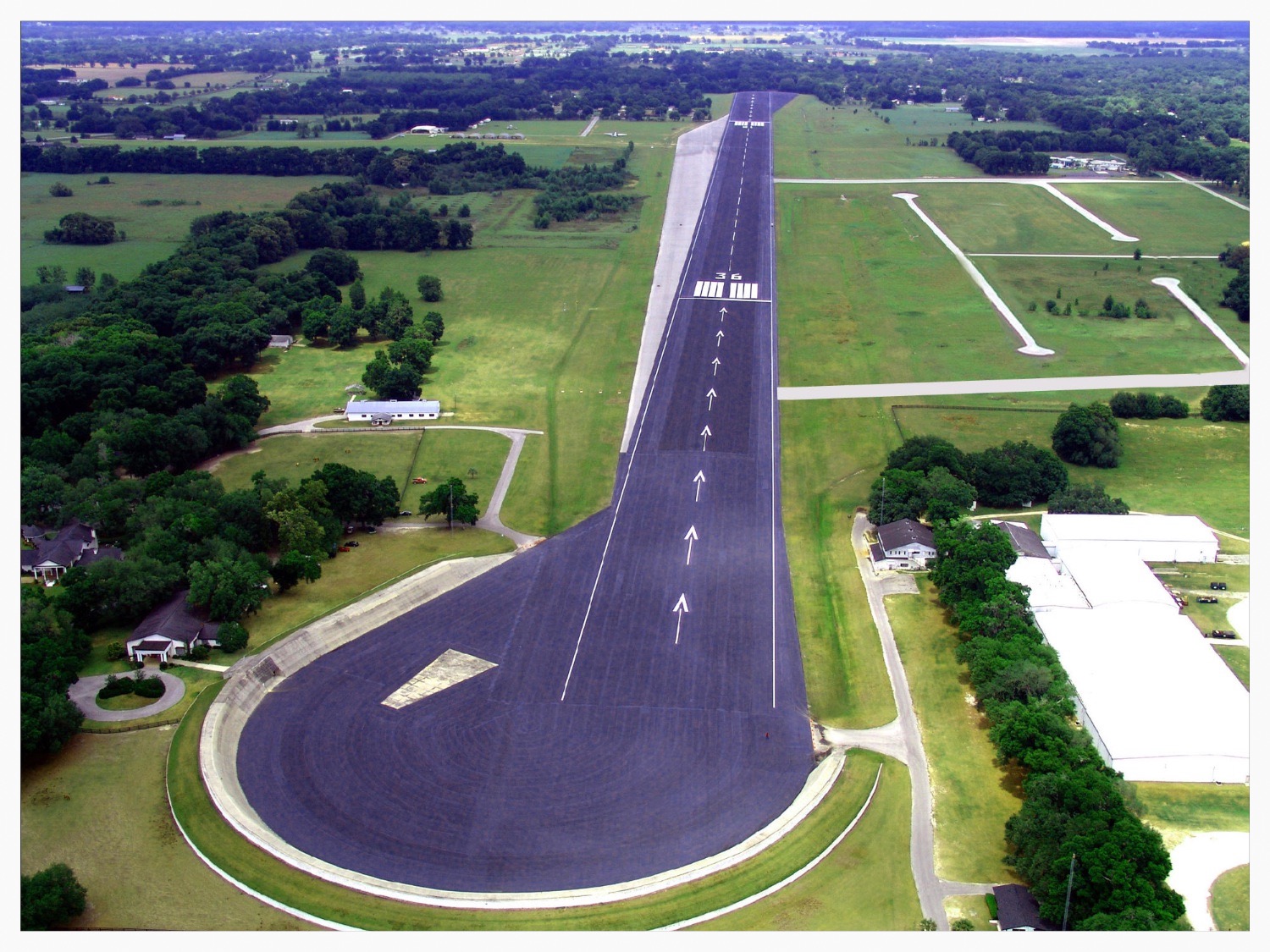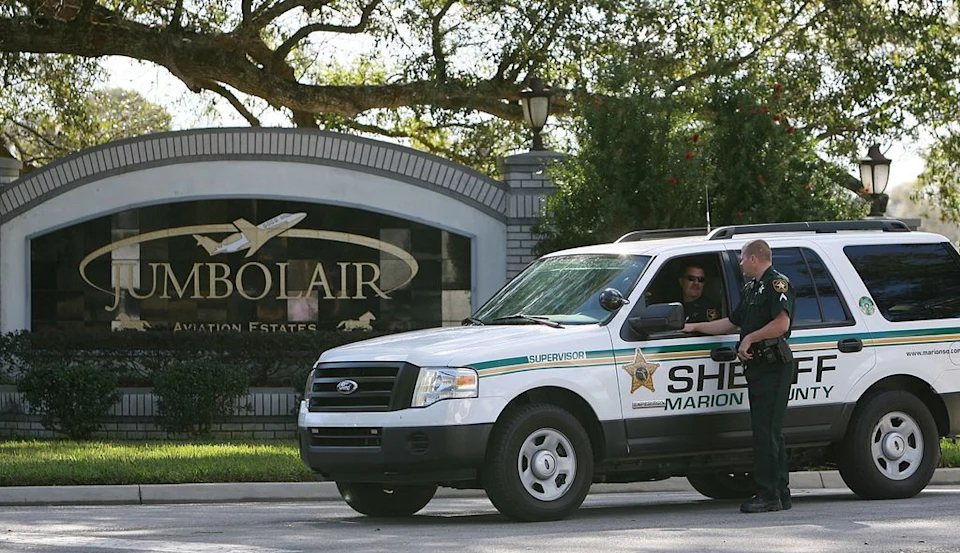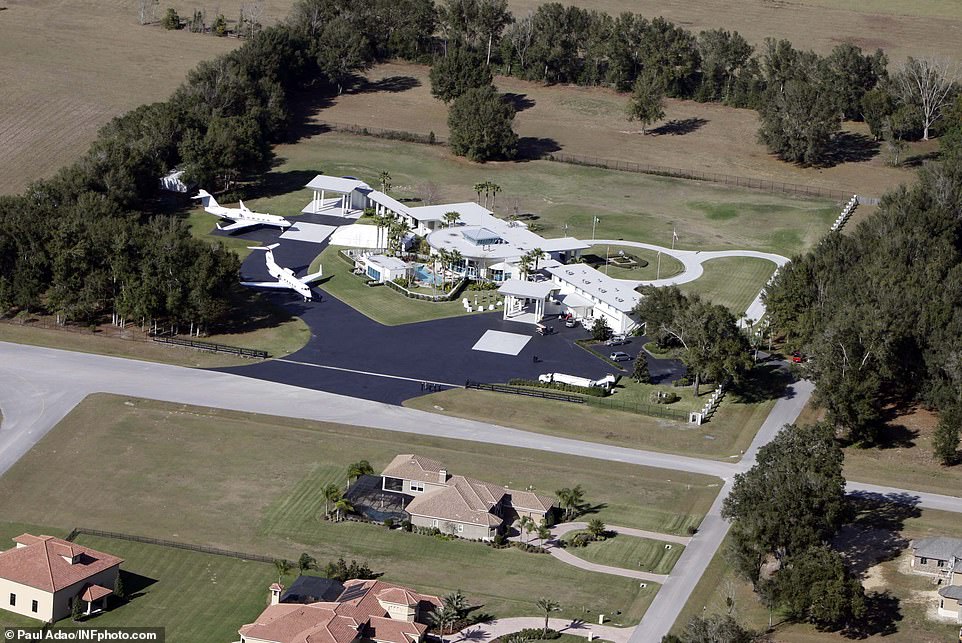
HFF is Raising the Alarm on SB 1118 That Fast-Tracks Development of Agricultural Lands

Horse Farms Forever, Inc.® is raising the alarm on Senate Bill 1118 filed by Senator Stan McClain that fast-tracks the development of “agricultural enclaves” and “infill residential development” parcels without any oversight from local government.
If this bill passes as written, what does it mean in Marion County? One example would be any parcel that qualifies as an agricultural enclave or infill residential development parcel, as newly defined by the bill, would be exempt from the protections of the Farmland Preservation Area, the comprehensive plan and the land development code, and administratively approved for development without any public hearing.
Senate Bill 1118 defines agricultural enclaves and infill residential developments, then exempts them from all normal development standards mandated by the comprehensive plan, land development code, and public hearing requirements, which are essential guiderails in place to assure local rule and protect the public.
Please read the letter Horse Farms Forever below that was sent to Kathy Bryant, Chairman of the Marion County Commission outlining our concerns.
